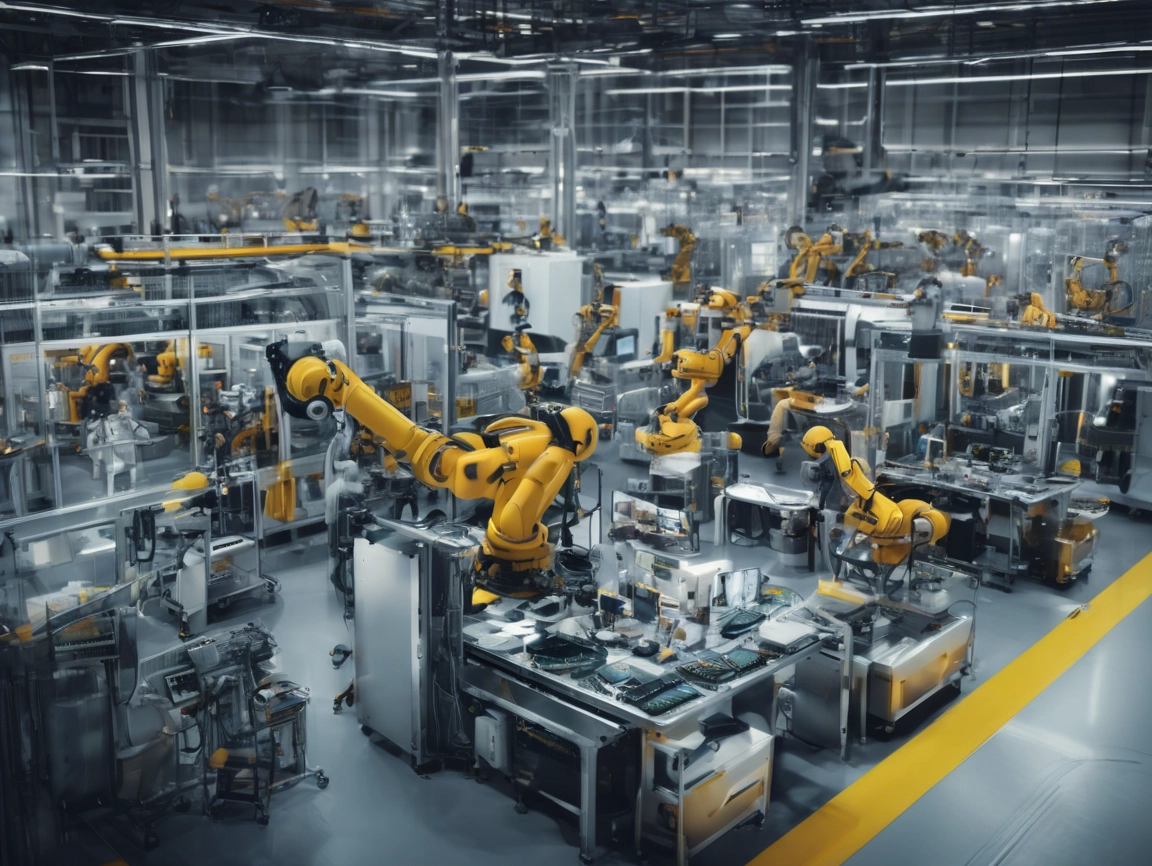
AI in Manufacturing: A Game-Changer or a Risk to Traditional Expertise?
- admin
- June 15, 2025
- Companies & Industry, Global Business
- Manufacturing
- 0 Comments
“Predicting the Future: How AI is Transforming Maintenance Practices in Indian Manufacturing”
Highlights at a Glance:
- AI-powered predictive maintenance is revolutionizing Indian manufacturing, reducing downtime and optimizing performance.
- Predictive models analyze data to foresee equipment failures, ensuring proactive solutions and cost savings.
- While efficiency improves, concerns linger about over-reliance on AI and its impact on workforce roles.
By the Numbers:
- Predictive maintenance powered by AI has reduced equipment downtime by 25% and maintenance costs by 20% in Indian manufacturing units (FICCI 2023).
- The adoption of AI in maintenance is projected to grow at a 40% CAGR, reaching a market size of $5 billion by 2027.
- Factories using AI-driven solutions report a 30% increase in operational efficiency, according to a NASSCOM study.
AI in Manufacturing: Enhancing Precision, Reducing Costs
India’s manufacturing sector, long plagued by inefficiencies and unplanned equipment failures, is undergoing a transformation with the integration of Artificial Intelligence (AI). Predictive maintenance, a standout application of AI, is enabling manufacturers to identify and address potential issues before they disrupt operations.
Proactive Problem-Solving with Predictive Models
AI systems analyze vast amounts of machine data in real time, using sensors to monitor performance and detect anomalies:
- Reliance Industries and Tata Steel are leveraging AI tools to predict failures in critical machinery, reducing unplanned downtime by 25%.
- Predictive algorithms assess temperature, vibration, and pressure metrics to alert operators of potential breakdowns, saving millions in repair costs.
Optimizing Resource Allocation
Predictive maintenance ensures optimal use of resources by scheduling repairs only when needed, moving away from rigid, time-based maintenance schedules. AI-powered platforms like Bosch India’s Phantom have streamlined resource allocation in automotive manufacturing, cutting maintenance costs by 20%.
Improving Workforce Productivity
AI allows maintenance teams to focus on high-value tasks rather than routine checks. By automating diagnostics, AI tools provide actionable insights, enabling faster decision-making. Factories report a 30% improvement in productivity, as workers can prioritize preventive measures over reactive repairs.
Challenges to AI Adoption
Despite its benefits, AI-driven predictive maintenance faces obstacles:
- High Implementation Costs: Small and medium enterprises (SMEs) struggle to afford the technology, creating disparities in adoption.
- Workforce Resistance: Technicians accustomed to traditional practices may view AI as a threat to their expertise.
- Data Quality Issues: Predictive accuracy relies on high-quality data, which can be inconsistent across industries.
Sustainability Through Predictive Maintenance
AI is contributing to sustainability in manufacturing by reducing waste and energy consumption:
- Factories using AI systems report a 15% reduction in energy usage, as machines operate at optimal efficiency.
- Predictive tools minimize material wastage caused by equipment failures, supporting India’s green manufacturing goals.
The Future of Predictive Maintenance in India
As AI continues to evolve, its role in predictive maintenance will deepen, bringing new opportunities and challenges:
- Digital Twins: Virtual replicas of machinery will allow manufacturers to simulate performance and test solutions without physical disruptions.
- AI-Powered Collaboration: Integrating AI with IoT devices will provide more precise monitoring and diagnostics.
- Skill Development: Training programs focused on AI integration will help bridge the gap between traditional expertise and technological innovation.
By 2030, experts predict that 50% of Indian manufacturing units will adopt predictive maintenance solutions, driven by government incentives and industry demands for efficiency.
AI-powered predictive maintenance is not just a technological upgrade; it’s a paradigm shift for Indian manufacturing. By blending machine intelligence with human expertise, AI is enhancing performance, reducing costs, and paving the way for a more sustainable and competitive industry. But as the sector adapts, the question remains: Can AI truly replace traditional wisdom, or will it serve as a powerful ally in India’s industrial revolution?


